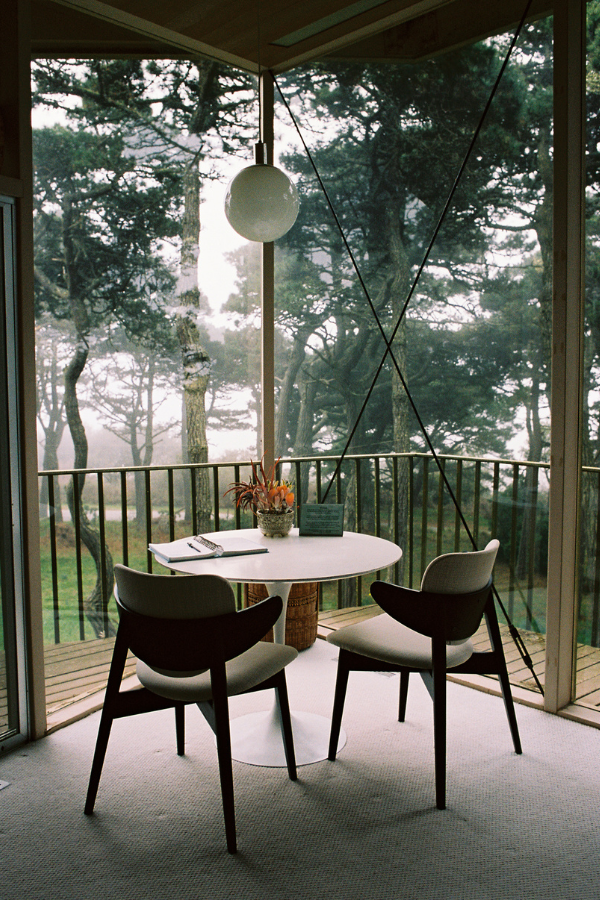
The Time-Turner Effect: How to Juggle Multiple Projects Without Losing Your Sanity
Summary
Managing multiple projects can feel overwhelming, but with clear prioritization, effective time management, and the right tools, you can stay organized and thrive creatively. From time blocking and using project management software to delegating tasks and celebrating small wins, this guide offers actionable strategies to help you juggle multiple projects without burning out. Start small, stay flexible, and focus on progress over perfection.
Reflection Questions
- What are the biggest challenges you face when juggling multiple projects, and how could prioritizing tasks or using a system help alleviate them?
- How do you currently manage unexpected events or shifting priorities in your schedule, and what strategies could help you handle them more effectively?
- Which of the ten tips resonates most with your current workflow, and how can you start implementing it today?
Journal Prompt
Reflect on a time when you felt overwhelmed by competing deadlines or multiple responsibilities. What strategies did you use to stay organized and focused? If you could revisit that moment, what tools or techniques from this article would you apply to make the experience smoother? Write down actionable steps to implement these strategies in your current projects.
You know that feeling when your to-do list keeps growing, deadlines loom, and every project seems to demand your immediate attention? It’s like you’re juggling flaming torches—one misstep, and it all feels like it could come crashing down. Whether you’re designing interiors, weaving stunning textiles, or running your own gallery, balancing multiple roles and responsibilities can be so incredibly overwhelming. Thankfully, you’re not alone, and it doesn’t have to be this way.
In this article, we’ll explore practical strategies for managing your workload, staying sane amidst the chaos, and even finding joy in the process. With a little planning, the right tools, and some flexibility, you can thrive creatively while handling everything on your plate. Here’s how to make working on different projects at the same time a little easier.
The Art of Prioritization: Know What Matters Most

When you’re juggling multiple creative projects, it’s easy to feel like everything needs to be done immediately. But let’s face it—trying to do it all at once isn’t sustainable. A simple way to bring clarity is by creating three lists: “must-do,” “nice-to-do,” and “not-now.”
Your “must-do” list should include deadlines and deliverables that absolutely must be completed. The “nice-to-do” list holds tasks that can enhance your projects or business but aren’t urgent. The “not-now” list is your permission slip to set aside ideas and opportunities that excite you but don’t fit into your current bandwidth.
This process not only reduces overwhelm but also helps you direct your energy where it matters most.
Focus on the Must-Do’s That Align with Long-Term Goals & Immediate Deadlines

Once you have your lists, hone in on the “must-dos” that drive progress on your biggest goals. Ask yourself, “Does this task move me closer to what I ultimately want to achieve?” For example, if you’re an interior designer balancing a client project and a marketing initiative, prioritize the client project if it’s tied to an immediate deadline or income stream.
Creative entrepreneurs often feel torn between passion projects and practical demands, but prioritizing means tackling the urgent while carving out space for the meaningful. Long-term vision paired with short-term action creates the sweet spot for productivity.
Learn to Say “No” to What Doesn’t Serve You
Saying “no” can feel counterintuitive when you’re full of ideas and opportunities, but it’s actually a creative act in itself. By saying “no” to the projects or distractions that don’t serve your goals, you’re saying “yes” to the work that truly lights you up and makes an impact.
Creativity thrives in focused, intentional environments, not in the chaos of trying to do everything. Protecting your energy for the things that matter most isn’t selfish—it’s smart. After all, your best work will come when your attention is on the right things, not all the things.
10 Tips to Juggle Multiple Projects Without Losing Your Sanity

We all know how stressful a creative job can be, but by incorporating these tips into your workflow, you’ll master the art of managing multiple projects while maintaining your sanity. With the right systems, clear priorities, and a little flexibility, you can tackle even the most daunting tasks with confidence and creativity.
1. Dedicate Uninterrupted Chunks of Time
Time blocking is one of the most effective productivity tools for managing multiple projects. By dedicating uninterrupted chunks of time to focus on one project or task, you’ll avoid the challenges posed by task-switching.
Set clear time blocks in your project schedule for critical tasks that demand deep focus, and use task management software to keep track of what needs immediate attention. Allocating resources like time requires extreme dedication, but it ensures that all your projects get the attention they deserve without feeling chaotic.
2. Schedule Creative Work When Your Mind Is Fresh

Juggling multiple projects means knowing when you’re at your best for different tasks. Most people find their minds sharpest in the morning, making it an ideal time for project planning or tackling key deliverables like designing, writing, or strategizing for a digital marketing campaign.
Save repetitive tasks, like answering emails or updating your project management software, for later in the day when your energy naturally dips. This fine line between creativity and administrative work can significantly impact your productivity across all your projects.
3. Leave Room for the Unexpected
Working on multiple projects inevitably brings unexpected events, like shifting priorities or team members needing immediate attention. Building buffer time into your day ensures that these moments don’t derail your project timelines or hinder progress.
Stay flexible and view your project schedule as a guideline rather than a rigid plan. A good process involves regular reviews of your project demands to adjust for changing needs without losing focus on critical areas.
Fuel your creative fire & be a part of a supportive community that values how you love to live.
subscribe to our newsletter
*please check your Spam folder for the latest DesignDash Magazine issue immediately after subscription

4. Use a System That Works for You
Project management tools are essential for staying organized when you’re managing multiple projects. Whether you prefer digital tools like Asana, Trello, Monday.com, or Basecamp (our favorite) or analog methods like a bullet journal, choose a central source to manage your project demands and keep track of multiple tasks.
Task management software can help you define goals, prioritize tasks, and streamline your workflow. It can also ensure that your team members stay on the same page even when conflicting priorities arise.
5. Commit to One System for 30 Days

Finding the right project management system can feel daunting, but consistency is key. Commit to using one tool for 30 days before reassessing it. This will allow you to evaluate its effectiveness for managing multiple projects simultaneously.
Regular review sessions can help you refine your processes, identify gaps, and make adjustments that better align with your business goals and resource availability.
6. Delegate Tasks to Lighten Your Load

No one can handle competing deadlines alone, which is why effective leaders know the value of delegation. Delegation is basically learning how to prioritize effectively and dole out tasks based on everyone’s strengths. Identify repetitive tasks or lower-priority items that others can handle. Use communication tools to ensure clear instructions and expectations when you delegate tasks to team members.
This not only frees up your time for critical tasks but also helps with allocating resources effectively across all your projects. Delegation is key to managing multiple tasks without feeling overwhelmed.
7. Build Self-Care into Your Schedule

Time management isn’t just about getting things done—it’s also about staying sane. When project demands pile up, it’s easy to neglect self-care, but regular breaks are essential for maintaining focus and creativity.
Schedule time for activities that recharge you, like a walk, a quiet lunch, or even a brief moment of reflection. These intentional breaks can have a significant impact on your productivity and help you manage multiple projects without burning out.
8. Stay Flexible When Priorities Change
In any project management role, shifting priorities are inevitable. Effective project managers stay flexible, adapting their project schedule and task lists as team priorities evolve.
Regular reviews of your project timelines will help you reallocate resources and stay focused on critical areas. This adaptability ensures that you meet key deliverables without compromising the quality of other projects.
9. Celebrate Small Wins Every Week

Acknowledging progress is important when managing multiple projects. Whether it’s completing one task or reaching a milestone for a larger project, small wins help build momentum and morale.
Write down your weekly accomplishments in a to-do list or project management software to keep track of your progress. Celebrating these moments reminds you that even small steps can significantly impact your business goals.
10. Use Time Blocking as a Guideline, Not a Rule
Time blocks are a great way to prioritize tasks and stay organized, but they should remain flexible. Life happens, and conflicting priorities, unexpected events, or even a new project landing on your desk can disrupt your plans.
View time blocking as a tool for decision-making, not a rigid schedule. An effective leader knows how to adjust their approach while staying focused on critical areas and making life easier for their team members.
Final Thoughts: You Can Do This!

Juggling multiple projects might feel overwhelming at first, but it’s a skill you can absolutely learn and refine with time and practice. By experimenting with the strategies outlined here—whether it’s time blocking, delegating, or finding the right project management tools—you’ll discover what works best for your unique workflow and creative demands.
Remember, the key is to remain flexible, prioritize effectively, and focus on steady progress rather than perfection. Think about it: what’s one thing you can do today to make managing multiple projects a little easier? Start there, and the rest will follow. With each small step, you’ll not only stay on top of your projects but thrive in the process.








